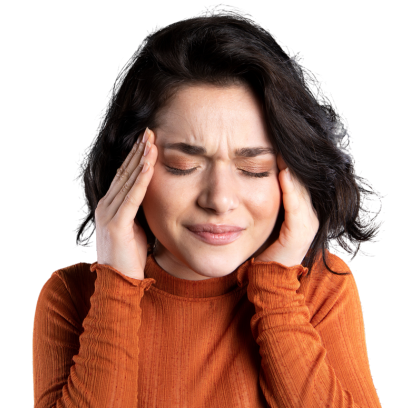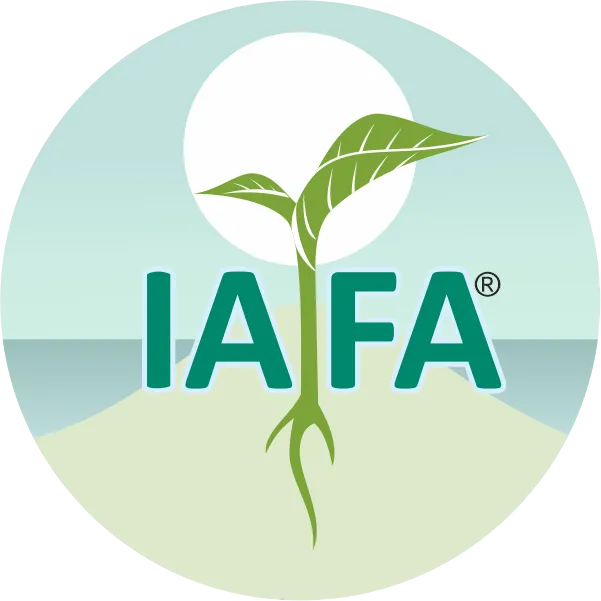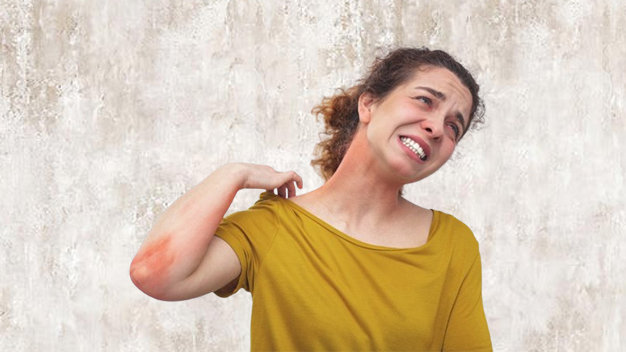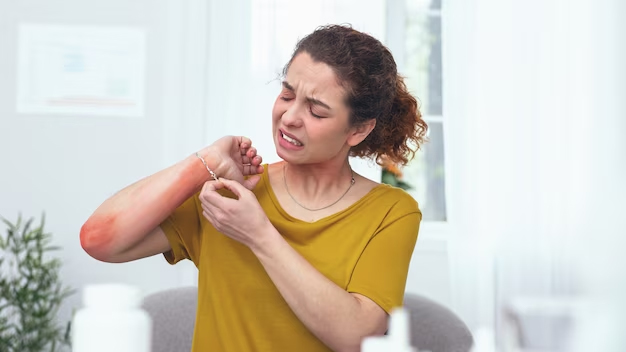On This Page
Migraine Due To Food Allergy – Causes, Symptoms & Ayurvedic Treatment
अर्द्धेतुमूर्द्ध्न: सोअर्द्धावभेदक: l
पक्षात्कुप्यतिमासाद्वास्वयमेवचशाम्यति ll
The hypersensitivity reaction of human body towards various factors like food, environmental changes, mental state etc. can affect different systems of body. Among these, allergic response to various food items can be responsible in causing head ache in some people. Food allergy can result in two types of head ache – Sinus headache and Migraine. The range of symptoms varies in different individuals based on health status and strength of allergen.This is found to be affected more in women than in men. Ayurveda has specifically explained the condition of migraine as Ardhavabhedaka. There is detailed description of symptoms as well as treatment of Ardhavabhedaka.
Common Causes of Migraine
Migraine may be triggered by various factors. The exact reason and mode of occurrence is not fully known. Nervous system is believed to have a great role in the manifestation of Migraine. The factors that can initiate migraine are:-
- Variation in hormonal levels in women
- Intake of certain drinks like alcohol, coffee, etc.
- Intake of specific foodstuffs like cheese, salty food, canned and baked food
- Skipping meals
- Reduced intake of water
- Presence of chemicals like preservatives, artificial sweeteners, flavors, etc in food.
Ayurveda explains the reasons for occurrence of Migraines as environmental changes, mental stress, increased alcohol intake, suppression of natural urges, improper digestion of food, etc.
Symptoms of Migraine Caused by Food Allergy
Symptoms include,
- Inflammation or swelling of the bronchial tube
- Coughing
- Production of clear, white, yellow, grey, or green mucus (sputum)
- Shortness of breath
- Wheezing
- Fatigue
- Fever and chills
- Chest pain or discomfort
- Blocked or runny nose
Ayurvedic Reference of Migraine Due To Food Allergy-Ardhavabhedaka
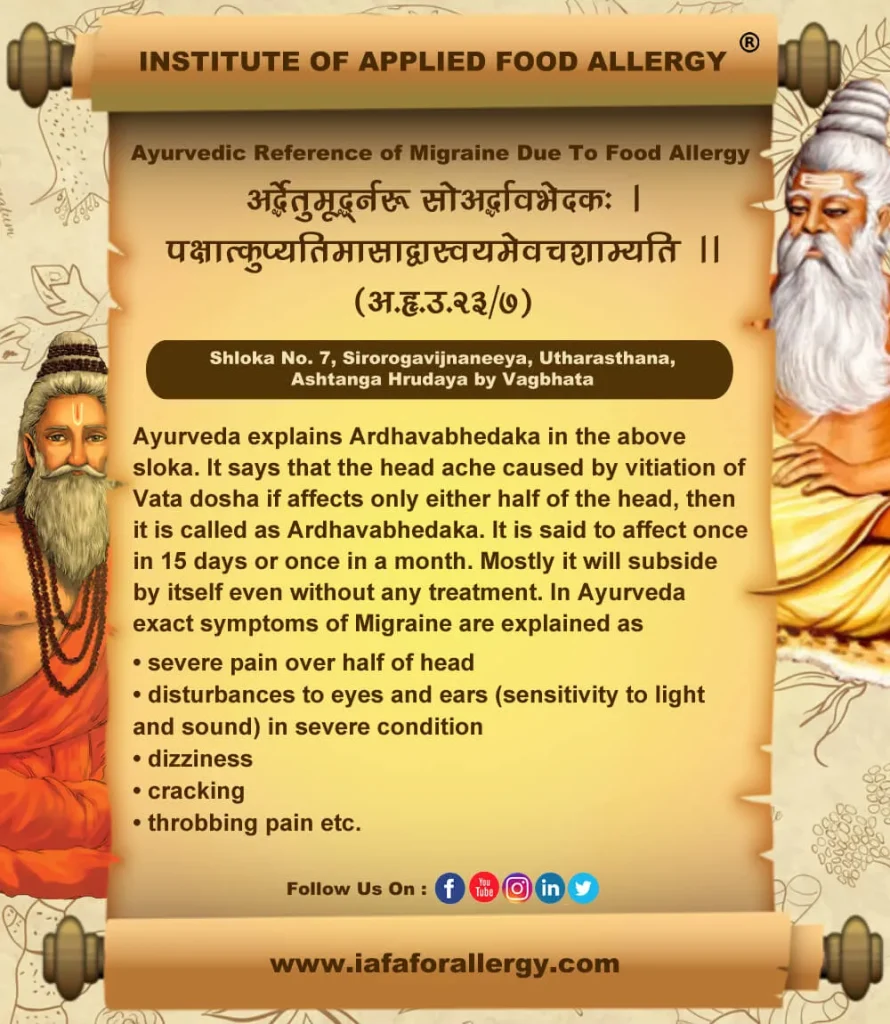

“Dr. Gupta’s IAFA is providing the best Ayurvedic treatment available for migraine, caused especially by food allergy. Institute of Applied Food Allergy® is an enthusiastic institution focussing on the management of various agonies related to allergy”.
‘Let’s get rid of headaches by the power of Ayurveda through IAFA.’
– Dr. Sahil Gupta (B.A.M.S., M.H.A.)
Ayurvedic Allergy Specialist
CEO & Founder of IAFA®
At last, Easier Management of Migraine Due To Food Allergy

Trusted by
More than 90,000 Patients

Convenient
at-Home Treatments

9.2 / 10
Customer Satisfaction Score
Treatment of Migraine due to Food Allergy
Ayurveda has a combined therapy of internal medicines, external medicines and treatment procedures to manage Migraine.
Internal Medicines for Migraine due to Food Allergy
- Pathyashdanga Kashaya
- Amrutothara Kashaya
- Pachanamrutha Kashaya
- Rasnadasamoola ghrita
- Sudarshana choorna
- Godanti bhasama
- Lakshmi vilasa ras
- Satavari gula
- Varanadi ksheera grita
External medicines for Migraine due to Food Allergy
- Kachuradi choorna
- Ksheerabala taila
- Propoundarikadi taila
- Balaswagandhadi taila
- Rasnadi jambeera
Purification Therapy in Migraine due to Food Allergy
- Vamana (vomiting)
- Virechana (purgation)
- Nasya (administering nasal drop)
Single Herbs for Migraine Due to Food Allergy
- Bala (Sida cordifolia)
- Aswagandha (Withania somnifera)
- Rasna (Pluchea lanceolata)
- Varana (Crateva nurvala)
- Satavari (Asparagus racemosus)
- Hareetahki (Terminalia chebula)
- Amalaki (Emblica officinalis)
Treatment Procedures for Migraine due to Food Allergy
- Siro vasti (Retention of medicated oil on head)
- Siro lepa (Application of medicated paste on head)
- Siro abhyanga (Head massage with medicated oil)
- Swedana (Sweating therapy)
Diet in Migraine due to Food Allergy
Pathya (Do’s)
- Light & warm food
- Increased intake of fruits, vegetables and salads
- Drink plenty of water
- Steam inhalation
- Practice of mild exercise
- Spent more time outside where good oxygen supply is available
- Use hot water for bathing (below neck)
- Proper sleep at night time
Apathya (Don’ts)
- Foodstuff like cheese, chocolate etc.
- Drinks like alcohol, particularly beer and red wine
- Food items containing preservatives like nitrates and artificial sweeteners
- Heavy and fatty food
- Long journey without rest
- Working in A/C rooms
- Continuous computer work without rest
- Suppression of natural urges especially cough, sneeze, urine etc.
- Smoking
- Day sleep
- Late night work
- Drinking cold water
Yoga and Pranayama for Migraine Due to Food Allergy
Regular practice of Yoga definitely helps in reducing the attacks and intensity of Migraine. Yoga helps to drop mental stress and increases blood circulation. Following Yoga postures will be especially beneficial in Migraine:-
- Hastapadasana
- Shirshasana
- Shishuasana
- Marjarasana
- Adho Mukha Svanasana
- Padmasana
Pranayama helps to bring easiness and lightness to body as well as mind. Regular practice of Pranayama with Yoga can do magical effects in reducing distress caused by Migraine.
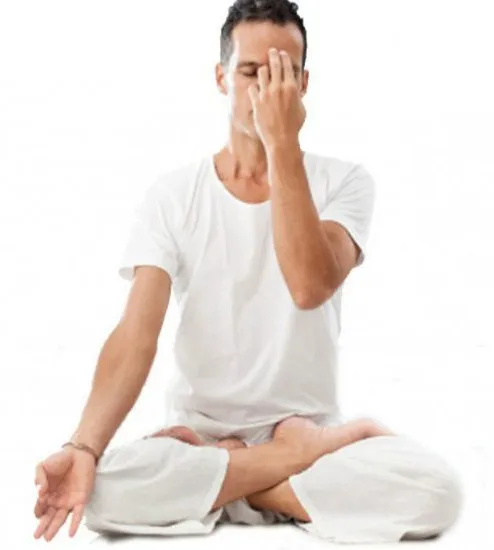
Frequently Asked Questions
Question: What is Migraine?
Answer: Migraine is a type of severe form of head ache caused by various factors like environmental changes, hormonal variation, mental stress, certain food and drinks etc.
Question: What are the symptoms of Migraine?
Answer: Migraine is manifested as severe throbbing or pulsating pain over one half or both halves of the head, intense irritability to sound and light, nausea, vomiting etc.
Question: Is Ayurvedic treatment effective in Migraine?
Answer: Yes, Ayurveda can assure complete relief from Migraine through various internal medicines, external medicines, therapies etc.
Question: Can migraine be caused by food allergies?
Answer: Some inflammatory foods such as dairy and gluten are the root cause of migraine in some patients. These allergies are quick to identify as these cause an immediate reaction.
Question: Is there a treatment of migraine due to food allergy in Ayurveda?
Answer: Ayurveda uses non-conventional treatments such as use of herbal remedies, yoga and pranayama, dietary recommendations to deal with migraine effectively. Ayurveda opens the new door for treatment through its holistic approach whereas in modern medicine, there is no permanent treatment of migraine due to food allergy.
Question: How effective is Ayurvedic treatment for migraine due to food allergy?
Answer: Ayurveda believes in treating the disease from its root cause. This condition is commonly related to Ardhavbhedaka in Ayurveda as explained by commentator Chakrapani. In Ayurvedic system of medicine, various internal medications are effective in pacifying the vitiated doshas and bring them into an equilibrium state.
Question: What is the recommended diet in migraine due to food allergy?
Answer: Consumption of light and warm food, fresh fruits and vegetables is advised whereas stale food, food items containing preservatives, heavy food should be avoided.
Question: What is the role of yoga and pranayama in migraine due to food allergy?
Answer: Some yogasanas such as Hastopadasana, Marjarasana, Padamasana, Adho Mukha Svasana are effective and Pranayam such as Nadi Shodhan, Anulom-Vilom are quite effective.
References
- Shloka No. 7, Sirorogvijnaneeya, Utharasthana, Ashtanga Hrudaya by Vagbhata.
- Agnivesha. 2011. Charak Samhita revised by Charak and Drudhabala with Ayurvedic Dipika Commentary by Chakarpani Dutta; Edited by Vaidya Yadavji Trikamji Acharaya, published by Chaukhambha Prakashan Varanasi.
- Siddhi Nandan Mishra – Ayurved Rasshastra, Chaukhambha Orientalia, Varanasi, Chapter – Shuddh Varga, 2007. p. 571.
- Bhav Mishra. Bhavaprakash Nighantu, Chaukhambha Bharati Academy, Varanasi, 2011.
- Sahil Gupta, Ayurvedic Aspects of Allergies and Fungal Infections, Edition 2021, Mold Allergy Chapter No. 19, Page No. 117-122.
Dr. Gupta’s IAFA aspires to be the destination of choice for people seeking authentic Ayurveda healthcare. IAFA ensures that our health care system better meets the needs of all about your health.
Uncompromising Excellence. Commitment to Care…!!! Dr. Gupta’s IAFA for your future health.
Was this Page Helpful?
So IAFA Root-Cause Treatment of Your Migraine Due to Food Allergy is Just 3 Steps Away!

01. Connect With Us
Share your history of illness or Book your appointment

02. Consult With Us
Dr. Gupta a certified Ayurvedic Allergist Consultant

03. Root Cause Treatment
Get an accurate diagnosis, medicines, diet & lifestyle change
Migraine Due to Food Allergy – Case Studies
Real Case Studies of Successfully Treated Patients from All Around the World by IAFA Ayurveda®
-
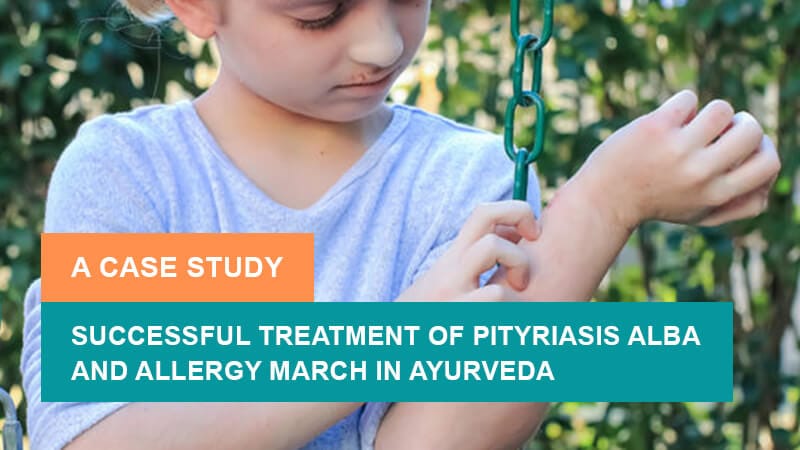
Successful Treatment of Pityriasis Alba and Allergy March in Ayurveda – A Case Study
It is a case study about successful treatment of Pityriasis Alba and…
-

Successful Treatment of Gallstones (Cholelithiasis) with Ayurvedic Medications – A Case Study
It is a case study about the successful treatment of Gallstones (Cholelithiasis)…
-
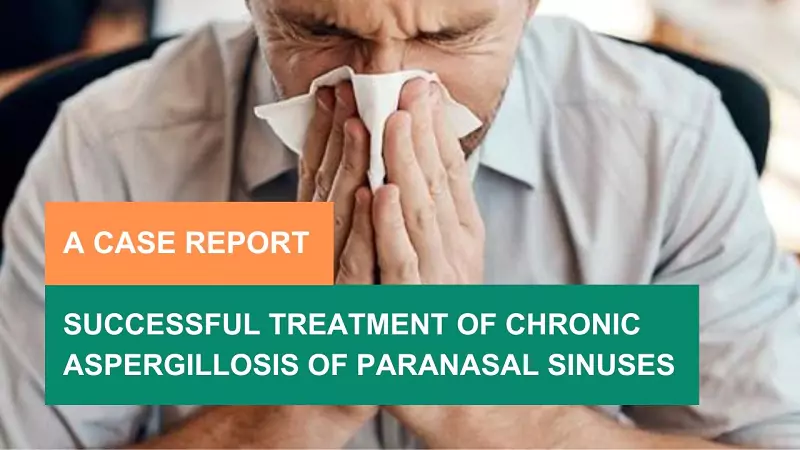
48-Year-Old Male Patient Got Relief from Chronic Aspergillosis of Paranasal Sinuses – A Case Study
Fungal infections can be treated with a high success rate by various…
-

6-Year-Old Child Patient Got Relief from Gluten Intolerance and Wheat Allergy – A Case Study
It is a case study of a 6-year-old Child Patient who got…


